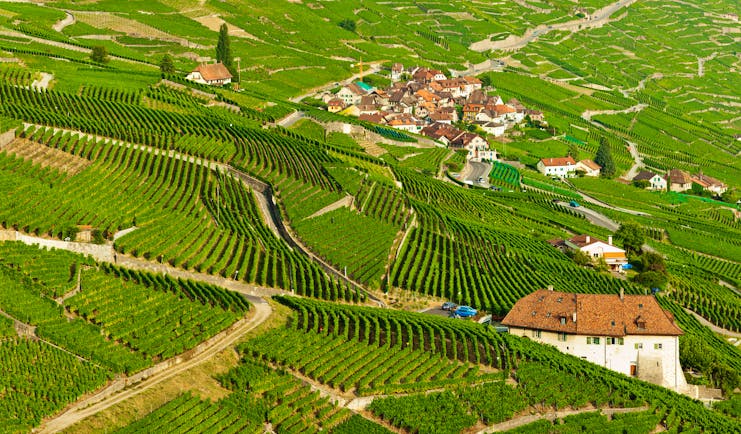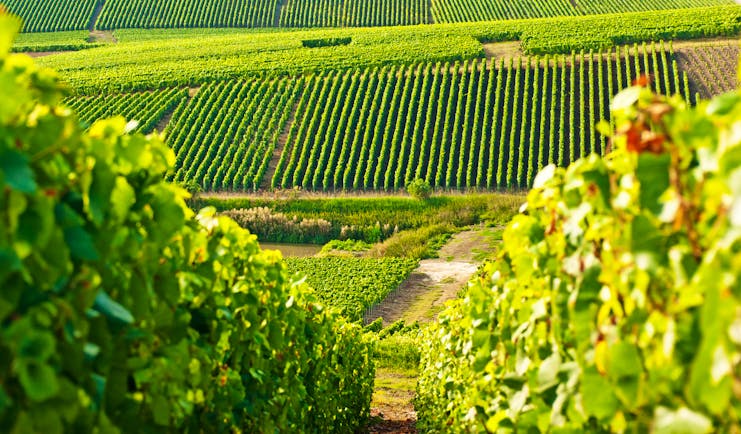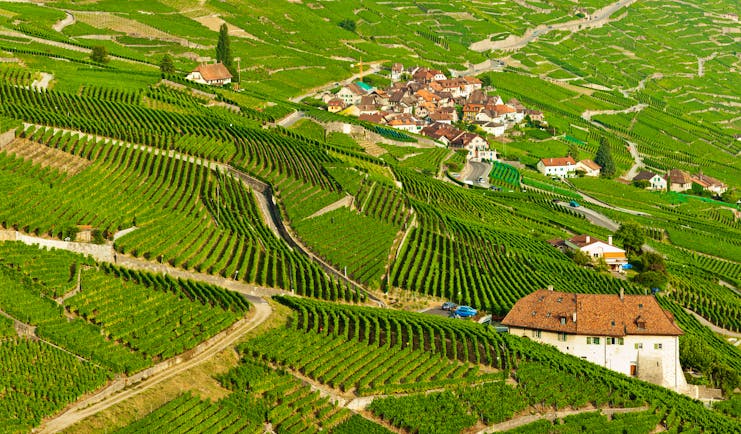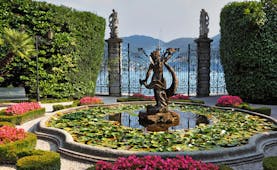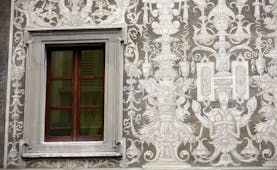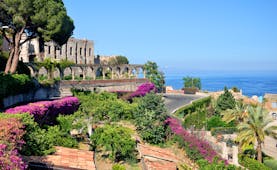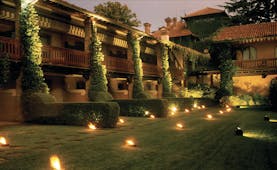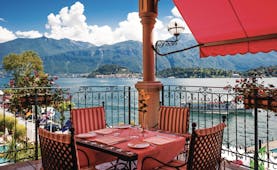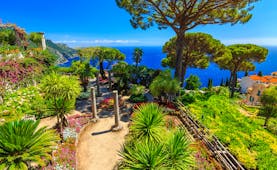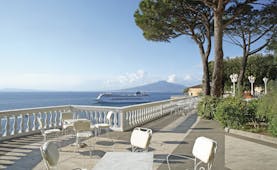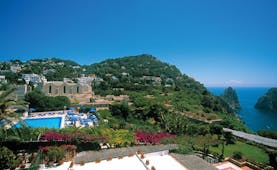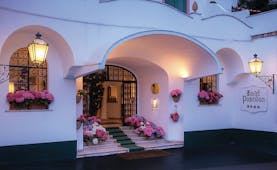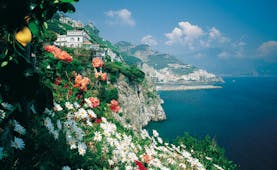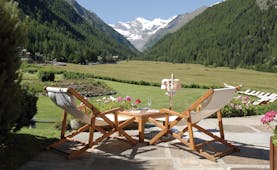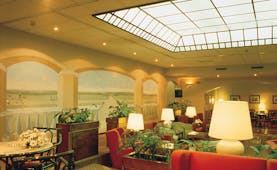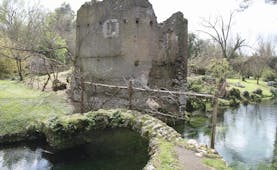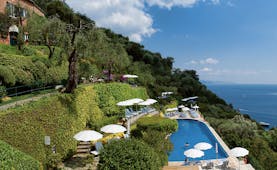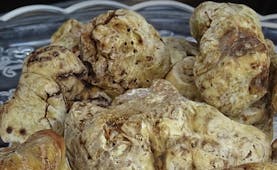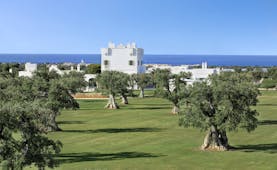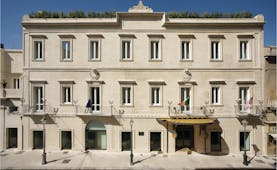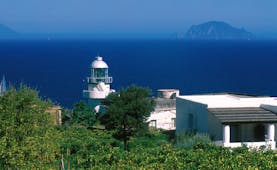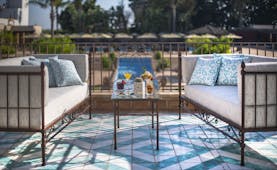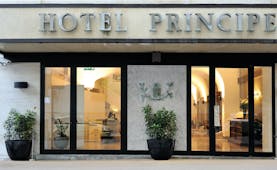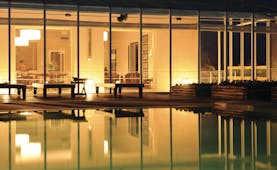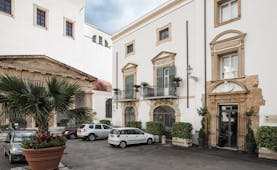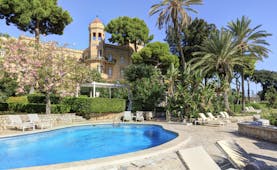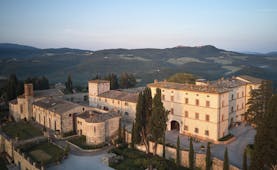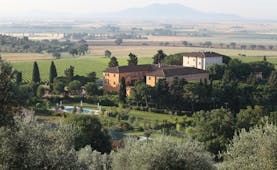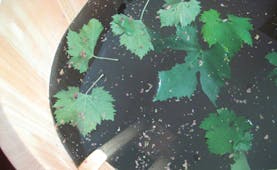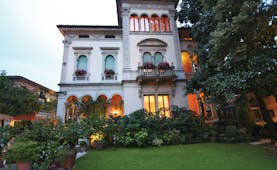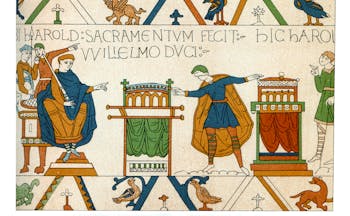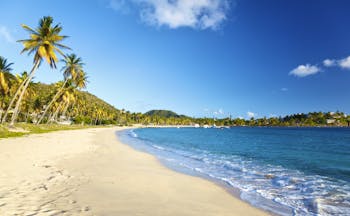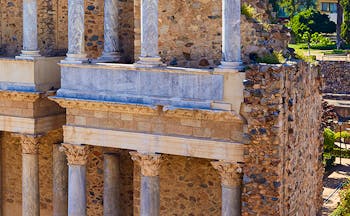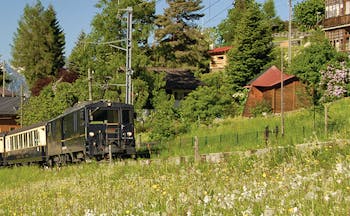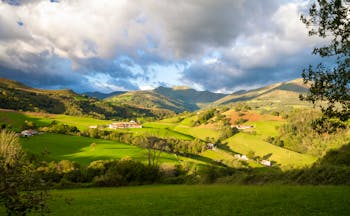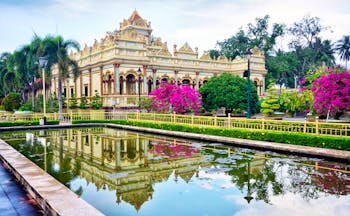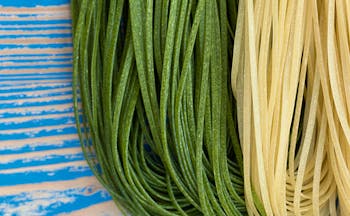Italian Lakes luxury self-drive tailor-made touring holiday
This luxury self-drive holiday of 15-nights to Italy in your own car to the Italian Lakes via France and Switzerland furnishes you with the freedom of the open road, travelling in your own car through France, crossing the Alps into northern Italy and spending team on each of the best-known lakes of Maggiore, Como and Garda as well as experiencing the surrounds of Lake Iseo, in the Franciacorta wine region.
Your touring holiday starts with a Eurotunnel crossing from Folkestone to Calais and then a short drive passing Reims in the Champagne region to an overnight stop at the heart of the champagne vineyards in Epernay. Your journey then takes you past Burgundy and into the Jura, crossing the mountains between France and Switzerland, before dropping down through fertile agricultural land to Lake Geneva and the sophisticated lakes-side town of Lausanne. The following day you have a scenic mountainous drive either via the Great St Bernard or the Simplon into Italy and the resort of Cannero Riviera on Lake Maggiore.
You have three nights on Lake Maggiore to explore by car and boat. From Lake Maggiore you cross the undulating landscape flanked by the Alps in the distance to Lake Como. Again, you have three nights on Lake Como to rest, relax and drink in the vista of the lake. Your next stop is on Lake Garda, the largest of the lakes and wide in the south, narrow to the north. Lake Garda benefits from a very mild climate and Mediterranean fruits such as lemons flourish here. There is the fortified town of Sirmione to visit and the ornate villa complex of Il Vittoriale. From Lake Garda you proceed skirting the towns of Brescia and Bergamo to your final Italian lake at Iseo in the Franciacorta, sparkling-wine region. Your homeward journey has you crossing the Alps once more, this time on the Gotthard route (by pass or road tunnel) into the very historic heart of Switzerland and an overnight stop in the small, picturesque town of Schwyz. The last two days of the touring holiday are broken with a stop in Alsace, on the wine route of Alsace, south of Colmar.
Depending on how late you want to cross the Channel, there may be time to take a leisurely drive along the Wine Route of Alsace and investigate this Franco-German borderland. You return to Folkestone from Calais by Eurotunnel.
Highlights
Eurotunnel crossing from Folkestone to Calais • Champagne • Jura drive • Lake Geneva • Lake Maggiore • Visit Isola Bella • Visit Stresa • Lake Como • Visit Villa Carlotta • Visit Villa Monastero • Lake Garda • Visit Sirmione • Verona • Lake Iseo • Lake Lucerne area • Alsace
Day by day
You cross by Eurotunnel from Folkestone to Calais, and then drive south-east into the Champagne region, to spend one night at Epernay. Nestling between the Aisne and Marne valleys, Epernay and its nearby rival, Reims, are at the heart of the champagne vineyards. If time permits, visit a winery such as Champagne Tribaut. This family run business supplies such prestigious companies as Krug and Taittinger and opens its cellars and vineyards for tours and tastings.
The drive south to Lausanne from Épernay takes you past Troyes, Dijon, and across the border around Jougne and Vallorbe. The Dent de Vaulion will be one of the first Swiss peaks that you pass on your way to Lake Geneva. The enchanting city of Lausanne will be your host for the next three nights. Ouchy, a former fishing village, is a popular spot for Lausanne residents, as it boasts its own chateau, port, the Haldiman Tower, and three parks. Chateau d’Ouchy alone is reason enough to visit, sitting as it does on the waterfront, with its fairytale façade of white with a red roof. In the evenings, golden lights illuminate the Chateau, adding to its splendour.
There are two routes to choose from today; you start by following Lake Geneva eastwards passing Vevey, Montreux and Chillon castle, and then the Rhone valley passing the wine villages of Aigle and Yvorne on your left as far as Martigny. Here you can head south following the Great St Bernard and then drop south into Italy at Aosta, picking up the A4 motorway north of Turin to head north once more to reach the southern end of Lake Maggiore. Or, at Martigny you follow the valley to Brig, passing the road off to your right that leads to Zermatt, and then at Brig you follow the route to the Simplon Pass, coming in to Italy north of Domodossola before dropping down to Lake Maggiore near Stresa. If travelling outside the peak summer months, be sure to check the road conditions first. You stay on Lake Maggiore for three nights.
Lake Maggiore is a beautiful lake, flanked by the region of Piedmont to the west, Lombardy to the southeast and Switzerland to the north. One of the three largest lakes, with Como and Garda, it measures an impressive 50km long and wide. The most well-known towns sit on the western shore. Stresa is popular with artists and writers, retaining an opulent elegance with its grand hotels and chic boutiques. Take a cable car from the town to Mottarone for a marvellous panorama of the lake, the Alps and the Monte Rosa massif. One of the town’s highlights is Villa Pallavacino. A main feature of Lake Maggiore are the islands in the lake, called the Borromean islands. Owned by the princely Borromeo family since the 12th century, you can visit by boat from Stresa and Pallanza. The most famous is the Isola Bella, named after Count Carlo II’s wife, Isabella. He built the palace and gardens as a luxurious wedding present for his beloved. We highly recommend a visit to the palace that boasts a Hall of Mirrors, a medals room and other staterooms, as well as the gardens and the caves, which are decorated with shells and stones. Isola dei Pescatori has retained its traditional character with its narrow lanes being homes to quaint cottages and shrines. This is the smallest of the three islands, measuring just 100m wide and 500m long! Isola Madre is the largest of the islands and has an impressive botanical garden and a 16th century palazzo. Opposite Stresa, across the Gulf of Pallanza, lies the lovely town of Verbania, where you can walk along the quays and admire the flowers and views of the lake. On the outskirts of the town is the Villa Taranto, whose gardens are landscaped in the English style and include azaleas, camelias and rhododendrons amongst its 3000 species. Just a few kilometres on from Verbania, the wonderful buildings of Cannero Riviera rise above the lake. Surrounded by a luscious backdrop of olives, vines and orange and lemon groves, Cannero Riviera is a charming lakeside town. To the north is Canobbio, a small Renaissance style resort near the Swiss border and then just over the border in Switzerland are the sophisticated lake-side towns of Ascona and Locarno, at the base of the dramatic Swiss Alps.
From Lake Maggiore you have a few variations of route from here to Lake Como. One route takes you along the western shore of Lake Maggiore, through Ascona and Locarno in Switzerland towards Lugano and south to Como. Another route is from Lugano along the northern shore of Lake Lugano to drop down to Lake Como at Menaggio. You spend three nights on Lake Como.
You have two full days to enjoy Lake Como. Lake Como is outstandingly beautiful, narrow and long, with luxuriant vegetation of olives, figs, mulberries, walnuts and oleanders, and is lined with cheerful resorts, splendid villas and mountainous backdrops. The architecture is quite rustic and alpine in feel, yet a sophisticated aura radiates throughout the area. Often called the prettiest town in Europe, Bellagio sits on a promontory dividing the subsidiary Lake Lecco from the southern part of Lake Como. The enchanting village is full of quaint cafes and boutiques, which line its little streets and alleyways ascending from the main square. In Bellagio visit Villa Melzi d’Eril, once a favourite picnic spot of the great composer, Franz Liszt, the gardens of this aristocratic villa are unsurpassable in their beauty and location. Although the 19th century villa is not open to the public, you can access the opulent Empire-style family chapel. Across a narrow finger of the lake from Bellagio, is the town of Varenna, bursting with gardens and cypresses. Its main attraction is the gardens of Villa Monastero. At Tremezzo another famous villa, well worth visiting, is that of Villa Carlotta. This villa was built by the extravagant marquis Giorgio Clerici between 1690 and 1743. The magnificent interior houses an enviable collection of Antonio Canova sculptures including Cupid and Psyche. The gardens are the real highlight though: 14 acres of rhododendrons, azaleas, palms, banana trees orchids, camellias and even a sequoia blossom and flourish amongst many other species, totalling 500 in all! A pretty resort on the lake and the starting point for many excellent walks up into the hills behind the lake is Cadenabbia, as is its neighbour, Menaggio. The largest town on the lake, and one that is often overlooked, is Como. Como is an attractive cathedral town, made up of cobbled streets and chic cafes of the old town and the newer industrial area famous for its fine silk production. You can visit silk producers and their shops. The cathedral was completed during the Renaissance period, and now boasts a striking façade and interior of both the Gothic and Renaissance styles. The façade includes statues of two of Como’s most famous residents, Pliny the Elder and Pliny the Younger, whose writings played a key role in the development of antique thought and philosophy.
Leave Lake Como today and head east to Lake Garda with the direct route skirting the cities of Bergamo and Brescia. The driving time is about 2 hours and 30 minutes.
You have two full days on Lake Garda, with plenty of activities and excursions from your hotel. On the lower slopes of the hills around Lake Garda are a profusion of lemons and olives, chestnuts and palms, magnolias and camellias. Pretty villages hug the sheltered bays and fishing boats moor next to sailing boats. Monte Baldo, above the lake, can be reached by cable car and affords spectacular views. At Gargnano on Lake Garda you can see the stone pavilions where lemons were traditionally cultivated. Sirmione behind its mediaeval walls enjoys a beautiful position at the southern end of the lake, dominated by Scaligero castle. The Grotte di Catullo on the waterfront was reputedly owned by Catullus, but now stands as a formidable ruin of arches and courtyards facing out to the sea. You can also visit the residence of Gabriele d’Annunzio, Il Vittoriale, at Gardone Riviera. Far more than just a villa complex, this estate is built more like a small town, with eccentric buildings, squares, avenues, fountains, exhibitions of vintage cars, an open-air Greco-Roman theatre, a war museum, and a lakeside restaurant. Another beautiful excursion is the Isola del Garda, an island in the lake where you can visit the Italian and English gardens and some rooms inside the neo-gothic Venetian-style villa dating from the early 1900s.
The road from Bellagio to Erbusco takes you past Bergamo, a town rich in history. You may wish to stop off here to explore the streets of palaces and towers that used to belong to old nobility, and to see the basilica, the baptistery, the vast convents, and the aqueducts. The many castles of the area once served a defensive purpose and separated the Republic of Venice from the Duchy of Milan. You arrive at your hotel near Lake Iseo surrounded by Franciacorta vineyards and with a view of the lake in the distance where you stay for two nights.
You have a full day in the Franciacorta region near Lake Iseo. Franciacorta wine is known for being a highly refined sparkling wine, produced in the same way as champagne. At Lake Iseo, take a boat trip to Monte Isola, the largest lake island in the whole of Italy. The small, privately owned Isola di Loreto cannot be visited by tourists, but the majesty of the castle can still be appreciated from the water. The landscape of Monte Isola and the sloped lake side are perfect for those looking for cycling as well as more gentle strolls. Monasteries, churches, and Roman ruins line the shore. Water sports such as sailing, are available on the lake, or you may choose to relax on one of the many small beaches. Golf and vineyard visits are also possible as is relaxing in the hotel’s spa. Enjoy dinner at the gastronomic restaurant of the hotel (pre-booking necessary).
The drive from Erbusco to Schwyz takes you northwest past Lake Como, and across the border at Chiasso. You cross the Alps at the Gotthard, either taking the road tunnel or choose to take the pass (check the weather conditions). The village of Schwyz is just a short drive from the banks of Lake Lucerne, in a part of Switzerland with the most historic associations of Swiss independence. Schywz’s central square has been voted one of the most beautiful in the whole of Switzerland, in part because of its unique Town Hall painted with a mural depicting the Battle of Morgarten, which took place nearby. You spend one night in this historic town.
You cross the border into France at Basel and enter the Franco-German region of Alsace. Alsace is known for the diversity of grapes that grow in its vineyards, from Gewürztraminer, Muscat, and Pinot Blanc, to Sylvaner white wines, and Pinot Noir red and rosé. Rouffach is at the southern end of the Wine Road of Alsace.
This morning head north along the Wine Route of Alsace from Rouffach, perhaps taking time to stop in the picturesque towns and villages of Alsace, such as Colmar, Riquewihr and Ribeauville. (If you intend to make several stops on the route, you will want to adjust your driving time for today and allow taking more than the normal 7 hours for the journey). As you reach Strasbourg it is time to take the motorway to Calais, passing cities such as Nancy, Metz, Verdun and Reims. At Calais you return to Folkestone on the Eurotunnel.
Excellent. So much easier coming to you than trying to book accommodation ourselves. Will certainly come to you again, especially for a self-drive holiday.Mr D, Sep 2023
Holiday price guide Price from £3,820 per person based on two people sharing a double room.
Holiday Code ITSD01
Call us on 01392 441245
Italian Lakes luxury self-drive tailor-made touring holiday
You cross by Eurotunnel from Folkestone to Calais, and then drive south-east into the Champagne region, to spend one night at Epernay. Nestling between the Aisne and Marne valleys, Epernay and its nearby rival, Reims, are at the heart of the champagne vineyards. If time permits, visit a winery such as Champagne Tribaut. This family run business supplies such prestigious companies as Krug and Taittinger and opens its cellars and vineyards for tours and tastings.
The drive south to Lausanne from Épernay takes you past Troyes, Dijon, and across the border around Jougne and Vallorbe. The Dent de Vaulion will be one of the first Swiss peaks that you pass on your way to Lake Geneva. The enchanting city of Lausanne will be your host for the next three nights. Ouchy, a former fishing village, is a popular spot for Lausanne residents, as it boasts its own chateau, port, the Haldiman Tower, and three parks. Chateau d’Ouchy alone is reason enough to visit, sitting as it does on the waterfront, with its fairytale façade of white with a red roof. In the evenings, golden lights illuminate the Chateau, adding to its splendour.
There are two routes to choose from today; you start by following Lake Geneva eastwards passing Vevey, Montreux and Chillon castle, and then the Rhone valley passing the wine villages of Aigle and Yvorne on your left as far as Martigny. Here you can head south following the Great St Bernard and then drop south into Italy at Aosta, picking up the A4 motorway north of Turin to head north once more to reach the southern end of Lake Maggiore. Or, at Martigny you follow the valley to Brig, passing the road off to your right that leads to Zermatt, and then at Brig you follow the route to the Simplon Pass, coming in to Italy north of Domodossola before dropping down to Lake Maggiore near Stresa. If travelling outside the peak summer months, be sure to check the road conditions first. You stay on Lake Maggiore for three nights.
Lake Maggiore is a beautiful lake, flanked by the region of Piedmont to the west, Lombardy to the southeast and Switzerland to the north. One of the three largest lakes, with Como and Garda, it measures an impressive 50km long and wide. The most well-known towns sit on the western shore. Stresa is popular with artists and writers, retaining an opulent elegance with its grand hotels and chic boutiques. Take a cable car from the town to Mottarone for a marvellous panorama of the lake, the Alps and the Monte Rosa massif. One of the town’s highlights is Villa Pallavacino. A main feature of Lake Maggiore are the islands in the lake, called the Borromean islands. Owned by the princely Borromeo family since the 12th century, you can visit by boat from Stresa and Pallanza. The most famous is the Isola Bella, named after Count Carlo II’s wife, Isabella. He built the palace and gardens as a luxurious wedding present for his beloved. We highly recommend a visit to the palace that boasts a Hall of Mirrors, a medals room and other staterooms, as well as the gardens and the caves, which are decorated with shells and stones. Isola dei Pescatori has retained its traditional character with its narrow lanes being homes to quaint cottages and shrines. This is the smallest of the three islands, measuring just 100m wide and 500m long! Isola Madre is the largest of the islands and has an impressive botanical garden and a 16th century palazzo. Opposite Stresa, across the Gulf of Pallanza, lies the lovely town of Verbania, where you can walk along the quays and admire the flowers and views of the lake. On the outskirts of the town is the Villa Taranto, whose gardens are landscaped in the English style and include azaleas, camelias and rhododendrons amongst its 3000 species. Just a few kilometres on from Verbania, the wonderful buildings of Cannero Riviera rise above the lake. Surrounded by a luscious backdrop of olives, vines and orange and lemon groves, Cannero Riviera is a charming lakeside town. To the north is Canobbio, a small Renaissance style resort near the Swiss border and then just over the border in Switzerland are the sophisticated lake-side towns of Ascona and Locarno, at the base of the dramatic Swiss Alps.
From Lake Maggiore you have a few variations of route from here to Lake Como. One route takes you along the western shore of Lake Maggiore, through Ascona and Locarno in Switzerland towards Lugano and south to Como. Another route is from Lugano along the northern shore of Lake Lugano to drop down to Lake Como at Menaggio. You spend three nights on Lake Como.
You have two full days to enjoy Lake Como. Lake Como is outstandingly beautiful, narrow and long, with luxuriant vegetation of olives, figs, mulberries, walnuts and oleanders, and is lined with cheerful resorts, splendid villas and mountainous backdrops. The architecture is quite rustic and alpine in feel, yet a sophisticated aura radiates throughout the area. Often called the prettiest town in Europe, Bellagio sits on a promontory dividing the subsidiary Lake Lecco from the southern part of Lake Como. The enchanting village is full of quaint cafes and boutiques, which line its little streets and alleyways ascending from the main square. In Bellagio visit Villa Melzi d’Eril, once a favourite picnic spot of the great composer, Franz Liszt, the gardens of this aristocratic villa are unsurpassable in their beauty and location. Although the 19th century villa is not open to the public, you can access the opulent Empire-style family chapel. Across a narrow finger of the lake from Bellagio, is the town of Varenna, bursting with gardens and cypresses. Its main attraction is the gardens of Villa Monastero. At Tremezzo another famous villa, well worth visiting, is that of Villa Carlotta. This villa was built by the extravagant marquis Giorgio Clerici between 1690 and 1743. The magnificent interior houses an enviable collection of Antonio Canova sculptures including Cupid and Psyche. The gardens are the real highlight though: 14 acres of rhododendrons, azaleas, palms, banana trees orchids, camellias and even a sequoia blossom and flourish amongst many other species, totalling 500 in all! A pretty resort on the lake and the starting point for many excellent walks up into the hills behind the lake is Cadenabbia, as is its neighbour, Menaggio. The largest town on the lake, and one that is often overlooked, is Como. Como is an attractive cathedral town, made up of cobbled streets and chic cafes of the old town and the newer industrial area famous for its fine silk production. You can visit silk producers and their shops. The cathedral was completed during the Renaissance period, and now boasts a striking façade and interior of both the Gothic and Renaissance styles. The façade includes statues of two of Como’s most famous residents, Pliny the Elder and Pliny the Younger, whose writings played a key role in the development of antique thought and philosophy.
Leave Lake Como today and head east to Lake Garda with the direct route skirting the cities of Bergamo and Brescia. The driving time is about 2 hours and 30 minutes.
You have two full days on Lake Garda, with plenty of activities and excursions from your hotel. On the lower slopes of the hills around Lake Garda are a profusion of lemons and olives, chestnuts and palms, magnolias and camellias. Pretty villages hug the sheltered bays and fishing boats moor next to sailing boats. Monte Baldo, above the lake, can be reached by cable car and affords spectacular views. At Gargnano on Lake Garda you can see the stone pavilions where lemons were traditionally cultivated. Sirmione behind its mediaeval walls enjoys a beautiful position at the southern end of the lake, dominated by Scaligero castle. The Grotte di Catullo on the waterfront was reputedly owned by Catullus, but now stands as a formidable ruin of arches and courtyards facing out to the sea. You can also visit the residence of Gabriele d’Annunzio, Il Vittoriale, at Gardone Riviera. Far more than just a villa complex, this estate is built more like a small town, with eccentric buildings, squares, avenues, fountains, exhibitions of vintage cars, an open-air Greco-Roman theatre, a war museum, and a lakeside restaurant. Another beautiful excursion is the Isola del Garda, an island in the lake where you can visit the Italian and English gardens and some rooms inside the neo-gothic Venetian-style villa dating from the early 1900s.
The road from Bellagio to Erbusco takes you past Bergamo, a town rich in history. You may wish to stop off here to explore the streets of palaces and towers that used to belong to old nobility, and to see the basilica, the baptistery, the vast convents, and the aqueducts. The many castles of the area once served a defensive purpose and separated the Republic of Venice from the Duchy of Milan. You arrive at your hotel near Lake Iseo surrounded by Franciacorta vineyards and with a view of the lake in the distance where you stay for two nights.
You have a full day in the Franciacorta region near Lake Iseo. Franciacorta wine is known for being a highly refined sparkling wine, produced in the same way as champagne. At Lake Iseo, take a boat trip to Monte Isola, the largest lake island in the whole of Italy. The small, privately owned Isola di Loreto cannot be visited by tourists, but the majesty of the castle can still be appreciated from the water. The landscape of Monte Isola and the sloped lake side are perfect for those looking for cycling as well as more gentle strolls. Monasteries, churches, and Roman ruins line the shore. Water sports such as sailing, are available on the lake, or you may choose to relax on one of the many small beaches. Golf and vineyard visits are also possible as is relaxing in the hotel’s spa. Enjoy dinner at the gastronomic restaurant of the hotel (pre-booking necessary).
The drive from Erbusco to Schwyz takes you northwest past Lake Como, and across the border at Chiasso. You cross the Alps at the Gotthard, either taking the road tunnel or choose to take the pass (check the weather conditions). The village of Schwyz is just a short drive from the banks of Lake Lucerne, in a part of Switzerland with the most historic associations of Swiss independence. Schywz’s central square has been voted one of the most beautiful in the whole of Switzerland, in part because of its unique Town Hall painted with a mural depicting the Battle of Morgarten, which took place nearby. You spend one night in this historic town.
You cross the border into France at Basel and enter the Franco-German region of Alsace. Alsace is known for the diversity of grapes that grow in its vineyards, from Gewürztraminer, Muscat, and Pinot Blanc, to Sylvaner white wines, and Pinot Noir red and rosé. Rouffach is at the southern end of the Wine Road of Alsace.
This morning head north along the Wine Route of Alsace from Rouffach, perhaps taking time to stop in the picturesque towns and villages of Alsace, such as Colmar, Riquewihr and Ribeauville. (If you intend to make several stops on the route, you will want to adjust your driving time for today and allow taking more than the normal 7 hours for the journey). As you reach Strasbourg it is time to take the motorway to Calais, passing cities such as Nancy, Metz, Verdun and Reims. At Calais you return to Folkestone on the Eurotunnel.
Excellent. So much easier coming to you than trying to book accommodation ourselves. Will certainly come to you again, especially for a self-drive holiday.Mr D, Sep 2023
Holiday price guide Price from £3,820 per person based on two people sharing a double room.
Holiday Code ITSD01
Our prices include
● Eurotunnel standard return from Folkestone to Calais for car and passengers
● 1 night’s bed and breakfast in a Classic double room at the Hostellerie la Briqueterie in Epernay
● 1 night’s bed and breakfast in a Superior room with lake view at the Hotel d’Angleterre et Residence in Lausanne
● 3 nights’ dinner, bed and breakfast in a Double room with garden view at the Hotel Cannero at Cannero Riviera
● 3 nights’ bed and breakfast in a Classic double room with park view at the Grand Hotel Imperiale, Moltrasio on Lake Como
● 3 nights’ bed and breakfast in a Double room with side lake view at the Villa del Sogno at Gardone Riviera
● 2 nights’ bed and breakfast in a Classic double at the Hotel L’Albereta in Erbusco
● 1 night’s bed and breakfast in a Double room at the Hotel Wysses Roessli in Schwyz
● 1 night’s bed and breakfast in a Traditional double room at the Château d’Isenbourg in Rouffach
● Concierge service and Expressions Holidays regional helpful hints
Our prices do not include
● Early check-in or late check-out at any hotels (although we can arrange this on request at additional cost)
● Any other services not mentioned above, such as transfers and meals except breakfast at hotels
● Personal holiday insurance. This is essential, and cover should be in place from when you book the holiday.
● Local tourist tax, usually between Euros 1 and 3 per person per night, and payable locally to the hotel
Additional information
Driving times for this touring holiday
Calais to Epernay 3 hours
Epernay to Lausanne 5 hours 15 minutes
Lausanne to Cannero Riviera 4 hrs 30 minutes
Cannero Riviera to Como 2 hours 30 minutes
Como to the Gardone Riviera 2 hours 15 minutes
Gardone Riviera to Erbusco 60 minutes
Erbusco to Schwyz 3 hours 30 minutes
Schwyz to Rouffach 2 hours
Rouffach to Calais 7 hours
Call us on 01392 441245
Italian Lakes luxury self-drive tailor-made touring holiday

Hostellerie La Briqueterie is a 5-star boutique hotel, perfectly situated for exploring the wineries of the Champagne region, including some of the most prestigious champagne houses. Delicious cuisine and excellent spa facilities afford guests a truly tranquil experience.
Classic double room

Hotel Angleterre et Résidence is a charming, traditional, Swiss-style, 4-star hotel in a prime location. Delicious cuisine, exceptional service and immaculate grounds offer guests a truly relaxing and indulgent experience.
Superior room with lake view

Hotel Cannero is a 4-star family-run hotel reflecting the quaint charm of its picturesque surroundings. This is a friendly and welcoming home from home, offering guests the chance to relax and soak in the beautiful Lake Maggiore.
Double room with garden view

Grand Hotel Imperiale Resort & SPA offers period Art Nouveau grandeur in a splendid lakeside setting. This hotel offers the chance to experience both the peaceful beauty of Lake Como and a taste of Italian town life.
Classic double room with park view
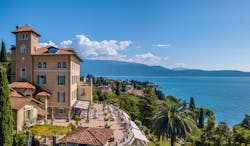
Hotel Villa del Sogno is an exclusive 5-star hotel in a beautiful natural location. Patios and terraces allow for relaxed al fresco dining in which the beauty of Lake Garda and surrounding flowers and greenery can be appreciated.
Double room with side lake view

Hotel l'Albereta is a 5-star boutique hotel in a beautiful natural location. Stunning cuisine, a divine spa and convenient proximity to Lake Iseo afford guests a relaxing and restorative retreat among the rolling hills and vineyards.
Classic double room
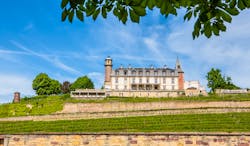
The Chateau d`Isenbourg is a charming 4-star chateau-hotel in a beautiful natural location. Located on the Alsatian wine trail, the delicious cuisine and traditional style offer guests a relaxing and indulgent experience.
Traditional double room
Excellent. So much easier coming to you than trying to book accommodation ourselves. Will certainly come to you again, especially for a self-drive holiday.Mr D, Sep 2023
Holiday price guide Price from £3,820 per person based on two people sharing a double room.
Holiday Code ITSD01
Call us on 01392 441245
Italian Lakes luxury self-drive tailor-made touring holiday
About Italian Lakes
An Expressions tailor-made holiday to the Italian Lakes spans the northern Italian regions of Lombardy, Piemonte and the Veneto. We offer hotels located by the undisputedly beautiful Lake Maggiore, Lake Como and Lake Garda and also the smaller, quieter lakes of Orta and Iseo, both well-worth exploring in their own right. Each lake has its own character and atmosphere, distinctive terrain, architecture and style. Placed as the lakes are to the south of the Alps and to the north of the Po Valley, they naturally possess a charming mixture of the vibrant coolness associated with the Alps but enlivened by the warmth of the South. The landscape around the Italian Lakes is one of deep blue waters surrounded by greenish-blue tinged mountains, often snow-capped. On the shores of the lakes and the lower slopes of the hills you find a profusion of lemons and olives, chestnuts and palms, magnolias and camellias. Pretty villages with rustic stone and wood houses hug the sheltered bays and fishing boats still moor next to sailing boats. Wrought-iron balconies and colourful shutters adorn gaily-painted houses with terracotta roofs. Dining is usually al fresco in the summer months and a magical atmosphere is created with the lapping of the waters and the twinkling of the lights around the lake and in the hills above. The close proximity to Milan and Verona as well as other less well-known but artistically interesting cities means that you can visit the Italian Lakes quite easily for just a weekend or short break as well as a longer holiday. The Italian Lakes can all be visited as part of a rail holiday, and the many beautiful gardens located in the vicinity of Lakes Como and Maggiore are well worth a visit as part of a garden tour holiday. Our favourite four and five star hotels for luxury holidays in the Italian Lakes include Grand Hotel Villa Serbelloni and Villa d'Este on Lake Como, and the Hotel Cannero Lakeside Resort on Lake Maggiore.
Highlights of the Italian Lakes
Historic villas are to be found on every lake from the Grotte di Catullo Roman villa at Sirmione on Lake Garda to Villa Melzi and Villa Olmo on Lake Como and the Palazzo Estense in Varese. Most of these villas also have extraordinarily beautiful gardens (which can be visited as part of an Expressions Garden Tour holiday) such as the Villa Carlotta on Lake Como, the Isola Bella in Lake Maggiore and Villa Taranto at Punta della Castagnola on Lake Maggiore. Monte Mottarone above Stresa on Lake Maggiore and Monte Baldo above Lake Garda can both be reached by cable car and afford spectacular views. At Gargnano on Lake Garda you can see the stone pavilions where lemons were traditionally cultivated. Within the region there are national parks such as the Stelvio National Park north of Orta and the Parco Nazionale della Val Grande above Verbania on Lake Maggiore.
Cultural highlights of the Italian Lakes
Much of the artistic and architectural cultural wealth in the region is concentrated in the great cities such as Milan and Verona but also in the less well-known but culturally-rich centres of Bergamo, Brescia, Pavia, Mantova and Vicenza (not directly on the Lakes but within reach for a day`s excursion). Highlights include the frescoes by Masolino at Castiglione Olona, the Rocca (castle) at Angera, the Flemish tapestries on the Isola Bella Lake Maggiore, the marble cathedral of Santa Maria Maggiore at Como and the works of art in the Galleria dell`Accademia Tadini at Lovere on Lake Iseo. Milan has La Scala, the Museo Poldi Pezzoli, the Brera Gallery (containing Raphael`s `Marriage of the Virgin` and the Montefeltro altarpiece by Piero della Francesca) and its Gothic cathedral. Verona has its annual opera festival from June until the end of August, the Romanesque church of San Zeno, the Renaissance Loggia del Consiglio and the Roman Arena.
Festivals in the Italian Lakes
The Verona Opera Festival takes place in the Roman Arena every year with performances running from June until the end of August. Verona also celebrates Carnival every year culminating on the Friday before Shrove Tuesday. Como holds a flea market, the Fiera di Pasqua, over the Easter weekend. Music festivals take place in Bergamo throughout the year. The Mille Miglia veteran car race starts and ends in Brescia (via Ferrara to Rome in May each year).
Gastronomy in the Italian Lakes
The cuisine of northern Italy tends to contain more meat and butter than further south and rice and polenta compete with pasta. Saffron is used extensively as in Risotto alla Milanese. Bresaola is cured raw beef served as an antipasta (now often with rocket and parmesan). Manzo al Barolo (beef in Barolo wine), Costolette alla Milanese (veal cutlets in breadcrumbs) and Ossobucco (veal in wine and tomatoes) are all popular dishes. Panettone cake and Zabaglione are two regional desserts. This region produces some of Italy's most famous cheeses such as Gorgonzola, Bel Paese, Fontina and Taleggio as well as some of Italy's most exportable wines such as Soave, Bardolino and Valpolicella. Less well known but interesting wines are produced in the Valtellina in the north of Lombardy and in Franciacorta near Lake Iseo.




